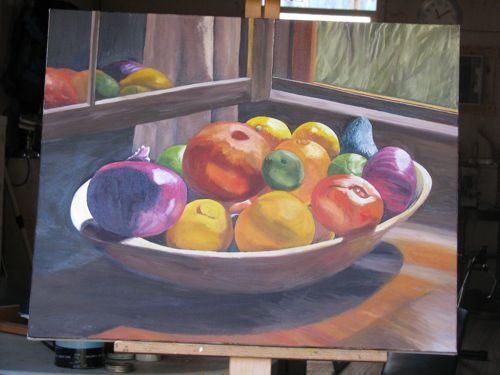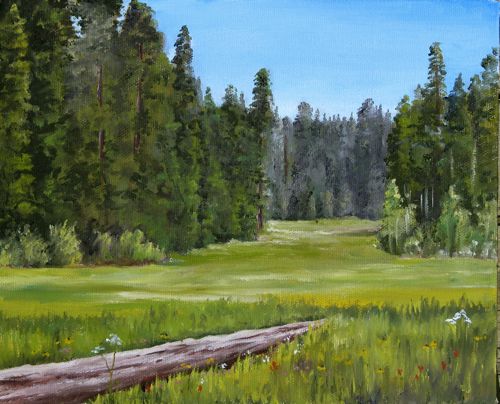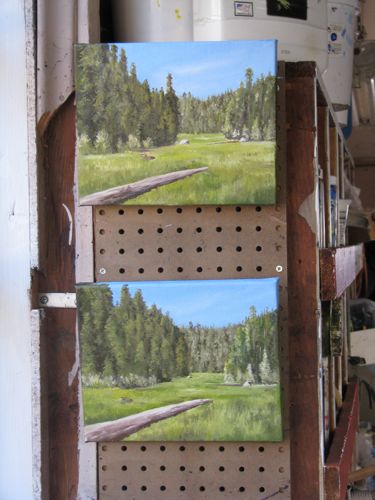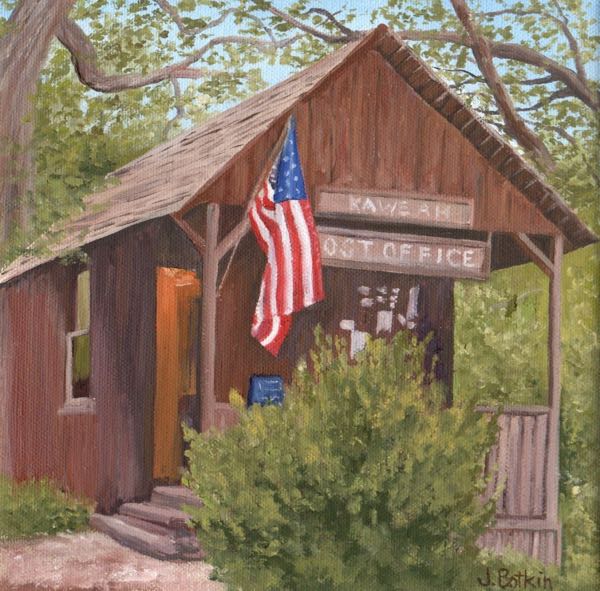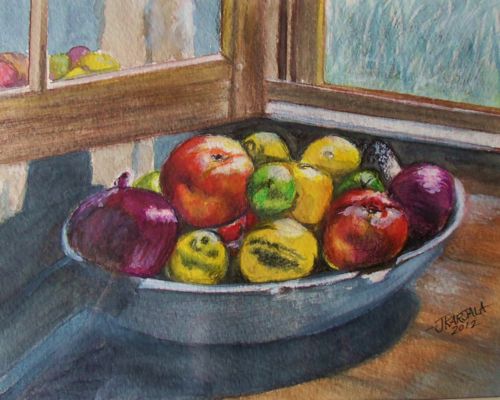I paint in layers, particularly when a painting is very particular. (Heh heh. . . how is that for being articulate?) First, the shapes get roughed in (and I mean ROUGHED). Then, the basic color is laid down thinly. Then, details begin, but not too exact and the color isn’t too fussy yet. Because I know it has to be gone over multiple times, I don’t get too worked up about precision yet.
Since I last showed you this, I’ve added new detail to the window on the right and repainted the curtains behind the window pane on the left. The onions, avocado, 2 limes, 2 lemons, and 1 orange are looking good for now. “For now” because once the rest is recovered, they may no longer meet my new standards.
Next, I’ll fix the 2 tomatoes, the remaining lime and lemon and orange. That will show what a mess the bowl and the table top are, so they will need to be redone.
Then, I’ll look at the whole painting again and see if anything else can be improved.
It reminds me of just adding a couple of new pillows to the couch. Suddenly, the shabbiness of the couch is evident. Then, when the couch is replaced, the 2 chairs no longer are up to snuff. (What does that mean?) When the chairs are replaced, the curtains become unacceptable. Those get replaced, and then the rug looks cruddy, and on and on it goes.
I’m not showing you any photos of my living room.
